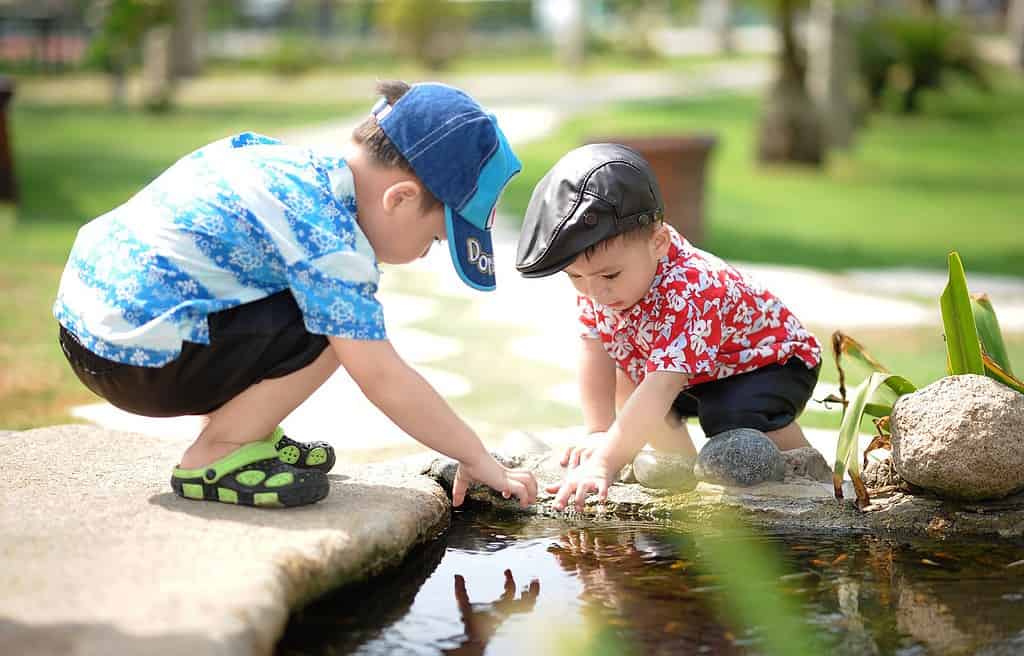
There was once a time when children were able to run around unsupervised. “Be back before dinner” and “just don’t get killed” were phrases uttered by parents across the United States. Exploring their neighborhoods unattended led to great memories, sometimes a few scratches, and as it turns out, a healthier mental state according to new research published in the Journal of Pediatrics.
Currently, school-aged children and adolescents in the United States experience unprecedented rates of anxiety and depression. In 2021, mental health for children and teenagers was officially recognized as a crisis and declared a “national emergency.” A new study by three eminent researchers in child development suggests that a lack of unsupervised “child’s play” is to blame for this decline in mental health.
“Parents today are regularly subject to messages about the dangers that might befall unsupervised children and the value of high achievement in school,” said David F. Bjorklund, Ph.D., co-author and a professor in the Department of Psychology in Florida Atlantic University’s Charles E. Schmidt College of Science. “But they hear little of the countervailing messages that if children are to grow up well-adjusted, they need ever-increasing opportunities for independent activity, including self-directed play and meaningful contributions to family and community life, which are signs that they are trusted, responsible, and capable.”
The new study suggests that the rise in mental health disorders is related to the decades-long decrease in kids’ and teens’ freedom to play, roam and just be kids without constant adult supervision. Adults’ eagerness to overprotect children and adolescents has actually had the opposite effect, resulting in a loss of independence psychologists say is a major factor in the epidemic of mental health problems, including anxiety, depression and suicide among today’s youth.
“Unlike other crises, such as the COVID epidemic, this decline in independent activity, and hence, mental wellbeing in children has crept up on us gradually, over decades, so many have barely noticed it,” Bjorklund said. “Moreover, unlike other health crises, this one is not the result of a highly contagious virus, but rather the result of good intentions carried too far.”
The study also showed a gradual reduction in children’s independence to engage in risky or self-directed activities without adult supervision. Children who engage in risky play, such as climbing a tree and exploring their natural surroundings, are less likely to develop phobias and experience less future anxiety.
The increased time children spend in school and on schoolwork at home was identified as one of the many constraints affecting children’s ability to engage in independent activity today. Between 1950 and 2010, the average school year in the U.S. increased by five weeks. Although it was once unusual to give elementary school students homework, today even kindergarteners often bring home assignments. By 2014, elementary schools only spent 26.9 minutes a day on recess (the recommended time is 60 minutes a day), including any recess associated with the lunch period. Some schools didn’t even offer recess at all.
A 2021 study by Oregon State University came to the same conclusion. Recess quality plays a major role in mental and social-emotional benefits. In a 2013 policy statement called “The Crucial Role of Recess in School,” written by the American Academy of Pediatrics (AAP), recess is called “a necessary break in the day for a child’s social, emotional, physical, and cognitive development.”
“They need to feel they can deal effectively with the real world, not just the world of school,” Bjorklund said.
Besides overcrowded school schedules, fear of academic failure or insufficient achievement can be a direct source of distress, the researchers added.
The authors highlight that while it’s important to keep kids safe and provide guidance, it’s also essential to give them more and more responsibility for their own lives.
“A major category of independent activity, especially for young children, is play,” said Bjorklund. “Research, as well as everyday observation, indicates that play is a direct source of children’s happiness.”






